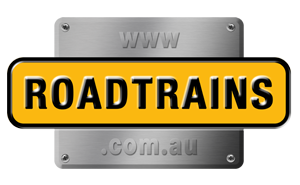Here in the darkness, on the side of the Flinders Highway roughly 620 kilometers west of Townsville we’d arranged to meet Clark Harland or “Cackles” as he’s known around the traps. He’d told us earlier in the week he was heading deep into what’s now been dubbed the Devil’s Triangle, and asked us if we were game enough to tag along and check out his custom Western Star 6900.
We were! But more on the mystery of the Devil’s Triangle and the man they couldn’t “Root, Shoot or Electrocute” later.
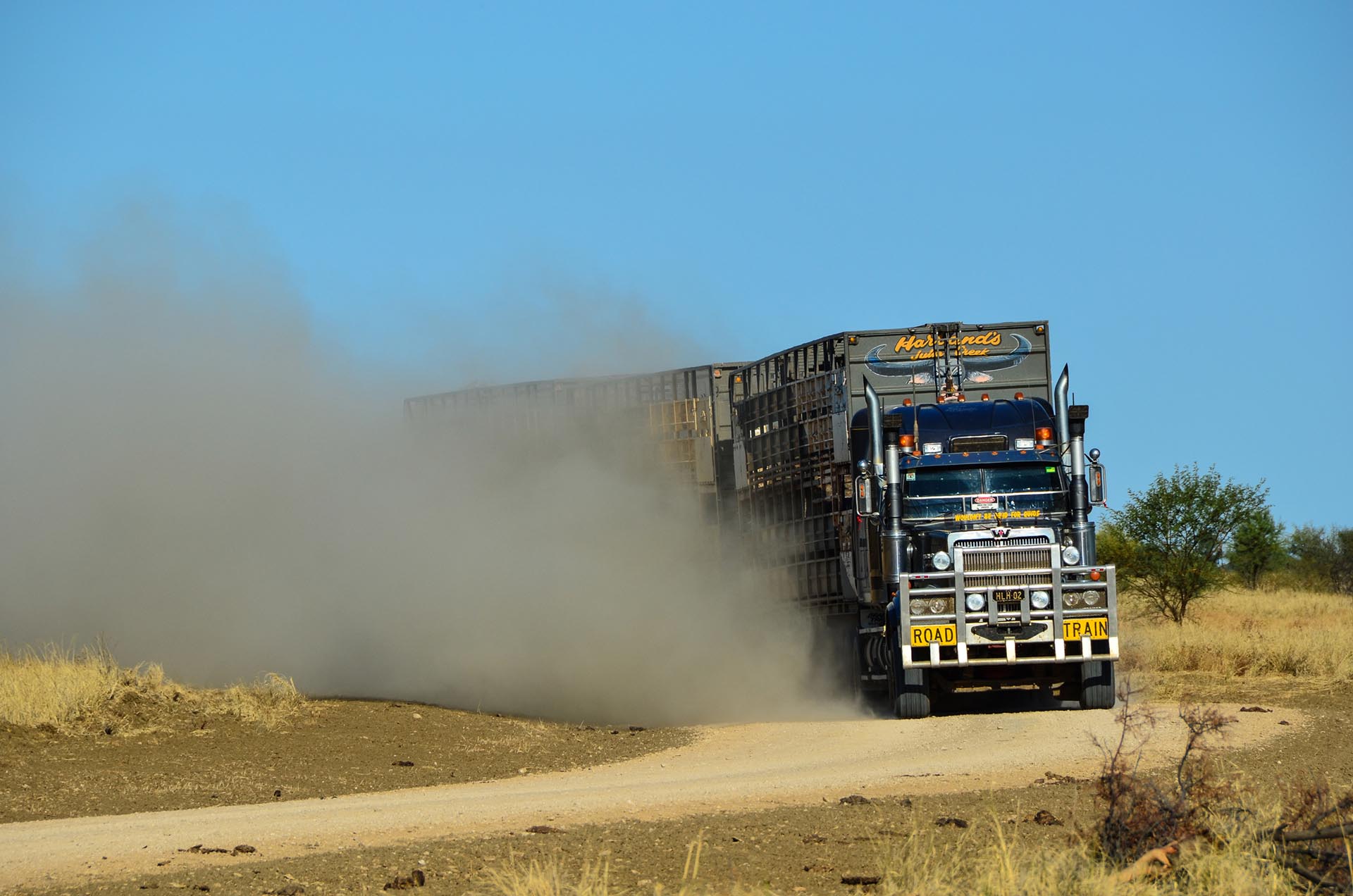
Western Star 6900
Over a scratchy phone call, Cackles explained that the plan was to drive deep into the Devil’s Triangle during the night and camp near the cattle yards where he’d be loading at daylight the next morning. Shortly after 7pm, in the cool outback darkness we followed the rattle of his livestock trailers along the narrow corrugated bush track.
There was little breeze that evening and the thick dust thrown up from his road train hung gingerly on the ground adding to the eeriness of the journey.
Shortly after midnight Cackles pulled his 6900 Western Star over to the side of the road not far away from the cattle yards and climbed into the bunk…
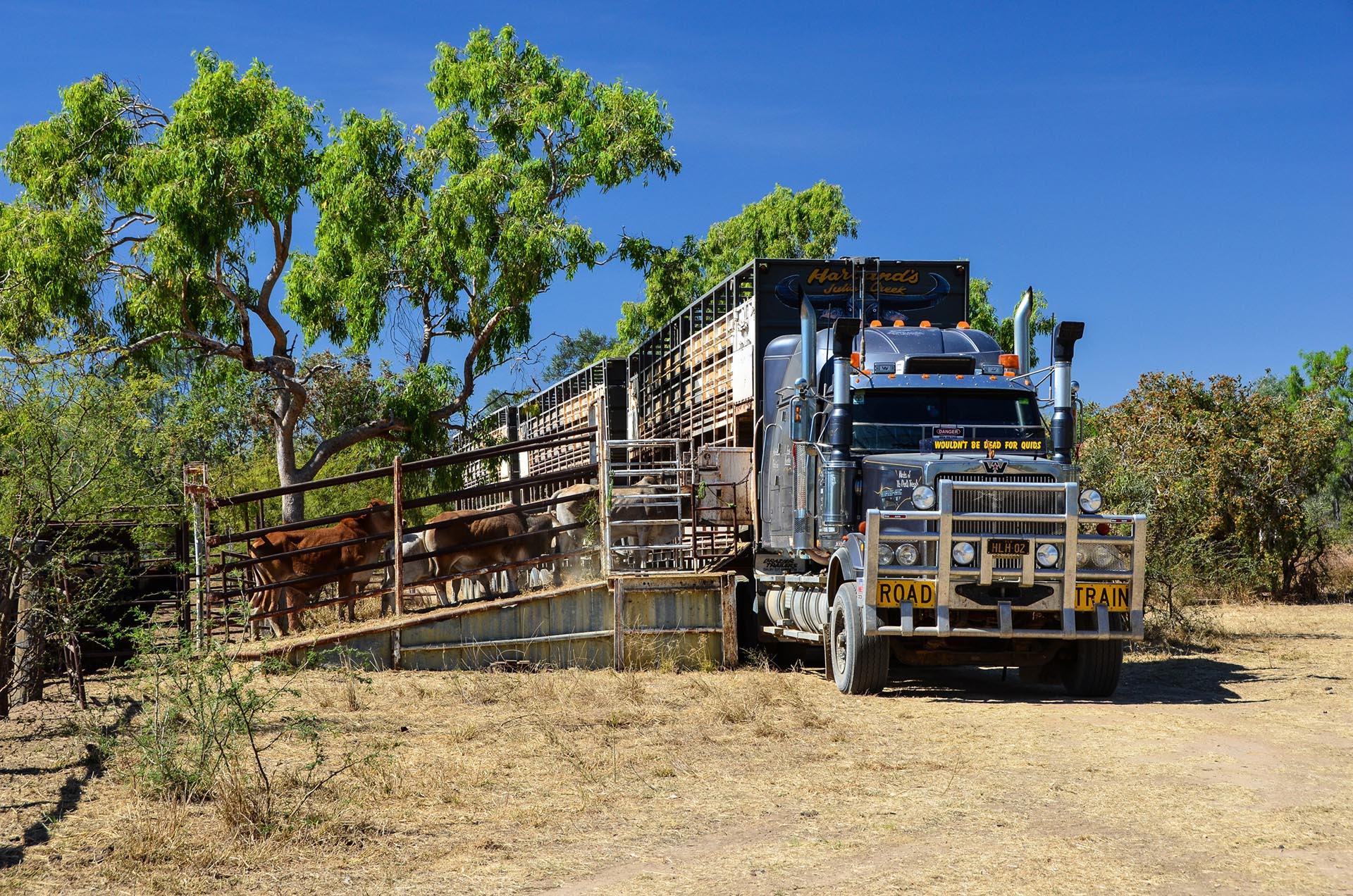
Western Star 6900
Day Break
It was still dark when Cackles started opening the doors on the cattle crate early the next morning. All the while, the cattle stirred lazily in the yards.
And just as the sun peered over the horizon Cackles started loading the cattle into the waiting stock trailers. He was pretty keen to get them loaded quickly, because he had two loads of them to do before nightfall.
Thankfully these young weaners ran steadily onto the waiting trailers.
It takes roughly half an hour to load the entire road train and today was no exception. Now with the road train loaded Cackles eased out the clutch and the 6900 Western Star with the three trailers in tow was on its way.
“I really like the room inside these Western Star cabins,” Cackles began. “This sleeper is 72 inches long, and I reckon you need a bit of room when you’re living in the truck day after day. I’ve got a freezer as well as fridge in there,” he added.

Western Star 6900
Regulations
“The regulations and driving hours have changed so much now and we have to document every detail from work, driving and rest,” he continued. “We can’t keep driving until we get home anymore, even out here in no-man’s-land, because the kilometers on the speedo must match the driving hours in my logbook. These rules even apply when we’re paddock carting on the stations and not even on a main road. It certainly makes the job a bit easier if you’re well rested and comfortable that’s why I ordered this big sleeper.” He added.
“I’m pretty self sufficient,” he explained. “I carry nearly 500 litres of fresh drinking water, there’s a 60 litre water tank on each trailer plus the large tank on the prime mover. Also each trailer has an 800 litre diesel tank, which are commonly called belly tanks.”
Cackles admits that he is more than impressed with the reliability his Western Star 6900 and the service he gets from his nearest dealer in Townsville. He is equally impressed with the power and reliability he gets from the 620 horsepower Cummins and 18-speed Roadranger. He’s running the Meritor AC-6T 6-Rod suspension with Meritor RT52-185 rear axles, with an 4.89:1 ratio, which is the preferred speck for cattle haulers up this end of the country.
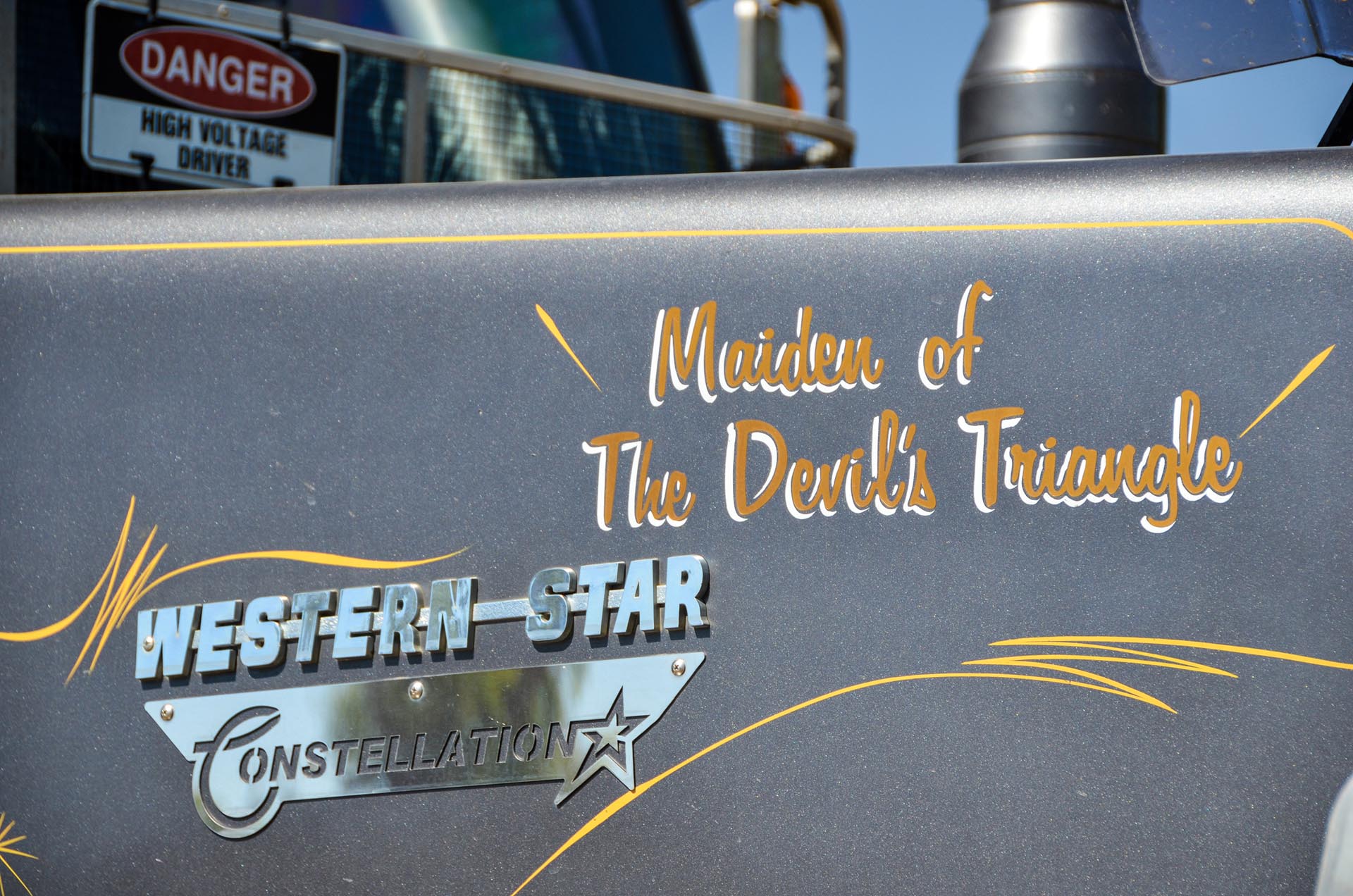
Western Star 6900 Constellation
We asked him if there was a story behind a couple of the signs he has painted on the cabin of his Western Star, and funnily enough there was. The short version of the story begins at the high voltage driver sign, which refers to the time he had about 20,000 volts run through him when he was on top of one of his livestock trailers.
“That knocked me for a while,” he said.
He smiled and said the reference to the “shoot” part on the rear wall sign stems back to when he was a young fella, “I might have fractured a law or two when I was a teenager”…. He added with a smile.
And that’s basically how he ended up being known as, “The Bloke they couldn’t Root, Shoot or Electrocute”.
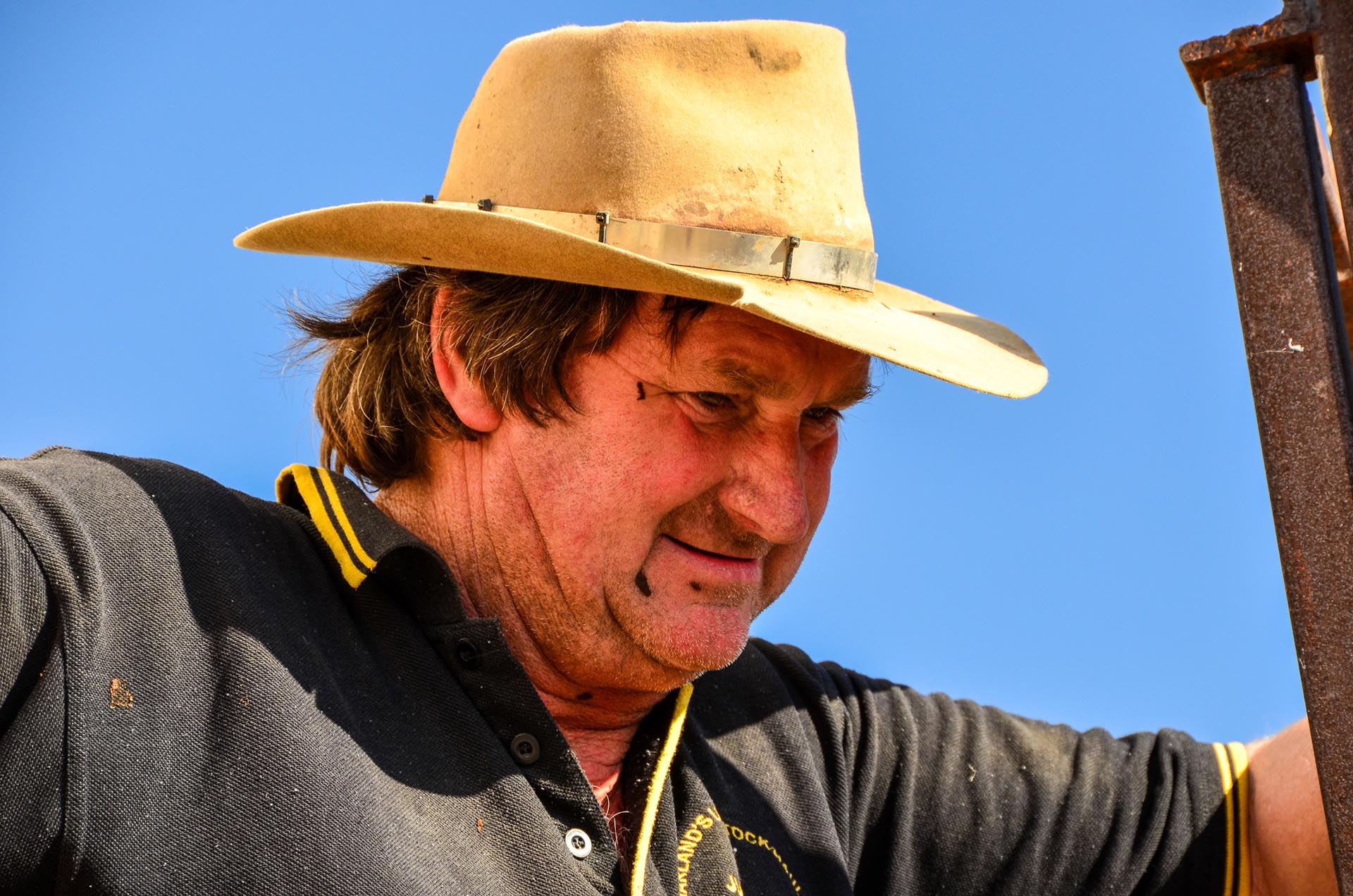
Clark Harland or “Cackles” as he is better known
The shadows were getting long on the ground when Cackles finally hit the bitumen late in the afternoon.
He let the road train roll to a standstill on a long lonely stretch of bitumen, and then he climbed from the cabin and collected a steel bar from the locker box and began taping his tyres and rims to loosen the dust. It is here where he would empty all the dust from the wheels.
It’s little wonder that the town’s folk out this way appreciate Cackles empting the dust from his wheels when you see how much comes out.
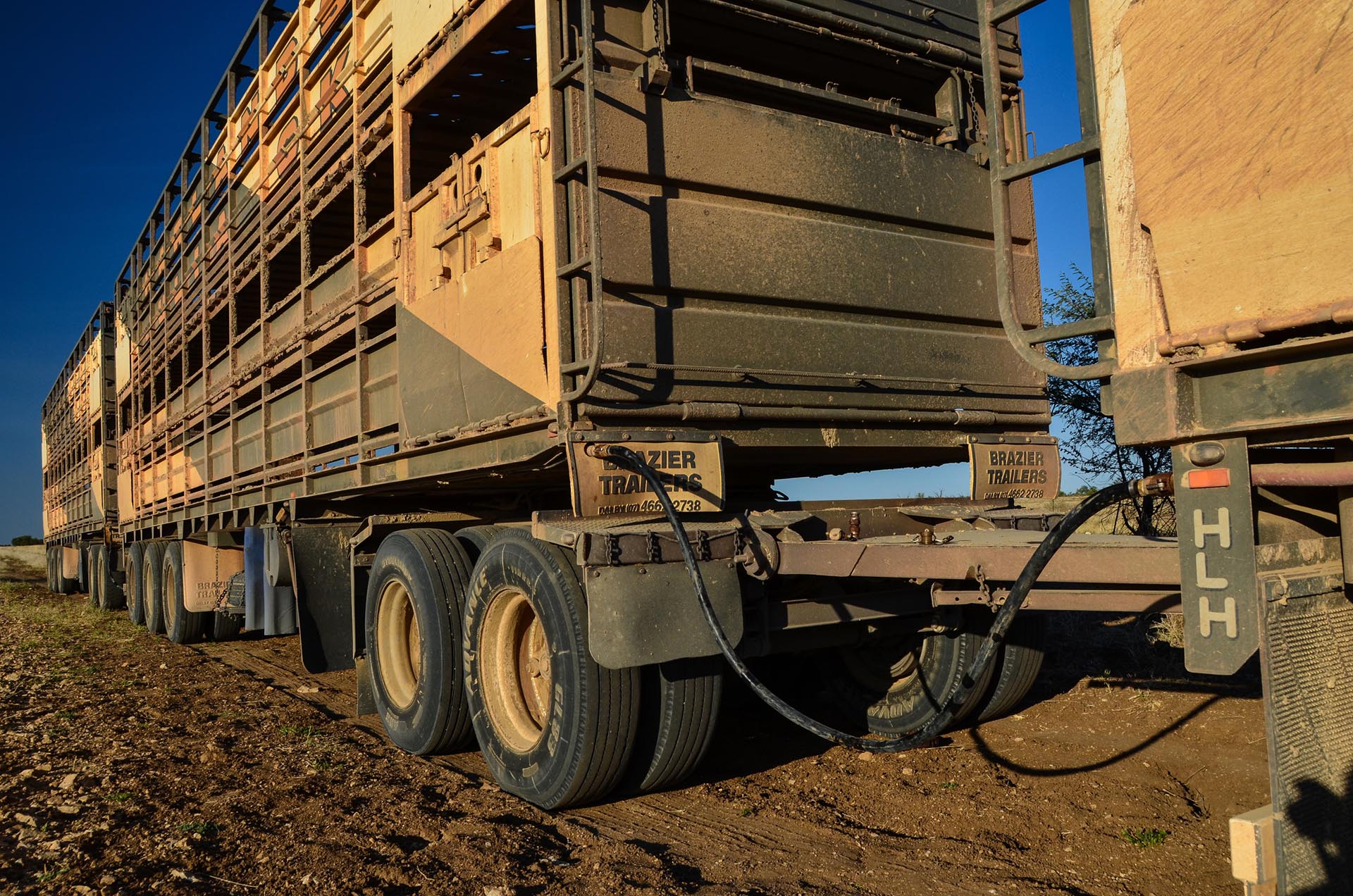
Western Star 6900
Belly Tank
Cackles rolled along slowly letting an astonishing amount of dust run from the wheels. A little further up the track he offered to demonstrate how he transferred 800 litres of diesel from the belly tank in the rear trailer to Western Star 6900’s fuel tanks.
Cackles unscrewed the cap on the Western Star’s first fuel tank then unclipped the hose from the lead trailer. He wraps the fuel tank’s cap around the hose a couple of times to stop it from falling out of the tank, and then opens the tap.
Just behind the landing gear on each trailer there is a coiled hose that he fetches, which is used to connect the fuel line between each trailer together.
Cackles to us he keeps the ends coupled together with a joiner for two reasons, firstly it helps keep the hose rolled up and secondly it keeps the fittings clean.
He said it takes roughly 20 minutes to set up and pump the 800 litres from the rear trailer’s belly tank into the Western Star’s fuel tanks. Which is pretty good considering there’s no service stations for 500 or 600 kilometres in any direction.
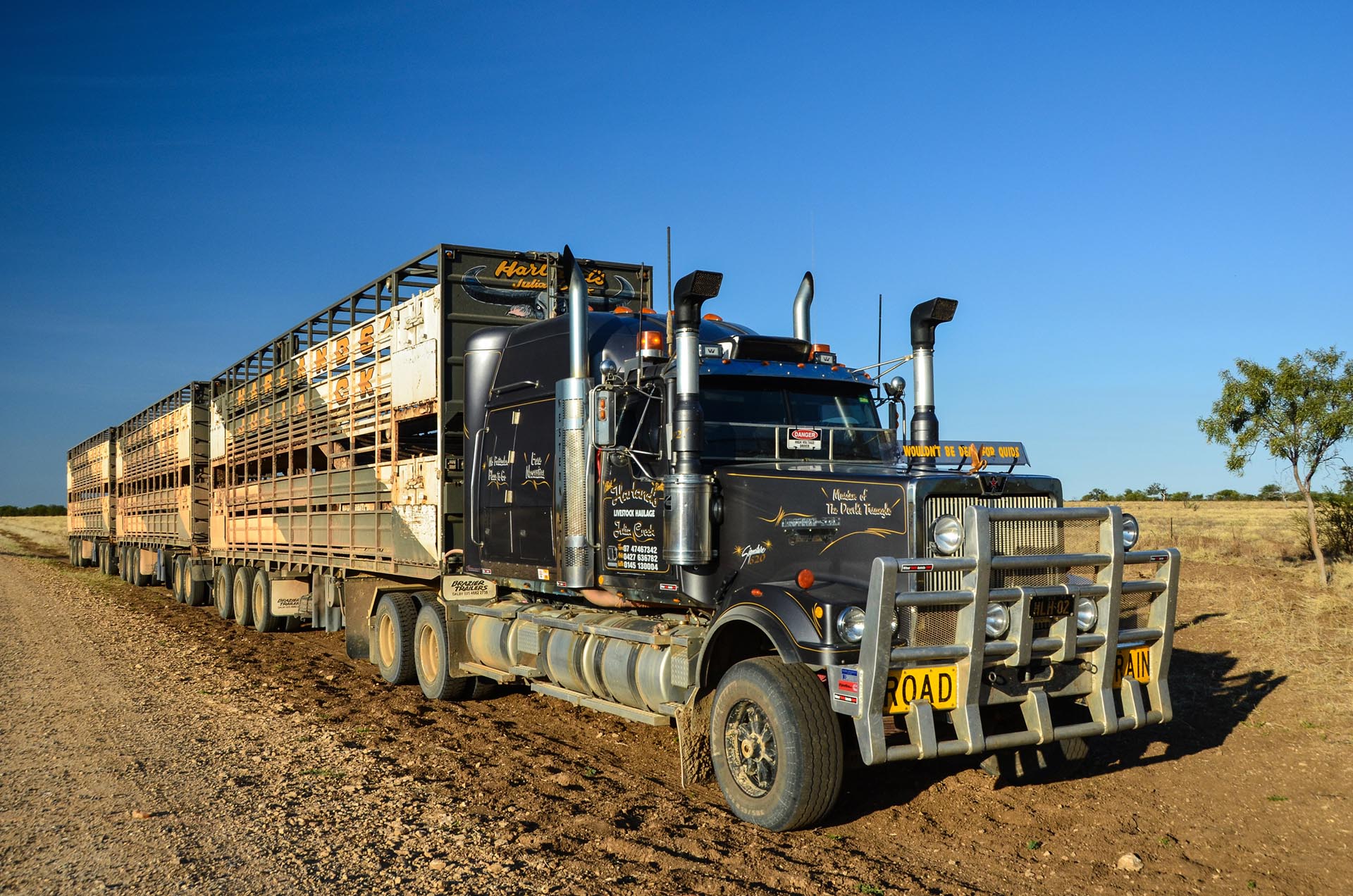
Western Star 6900
He sets the Cummins to run at a fast idle so the engine’s air-compressor will keep the air pressure in the air tanks topped up. That’s because the fuel is blown out of the trailer’s belly tank through a line in the trailers outer frame and into the Western Star’s fuel tanks.
Here in the remote regions of Australia, where service stations are scarce, being able to refill the truck from the additional storage tanks under the trailers is a huge advantage for operators like Cackles.
The fuel flows steadily along the fuel line that’s built into the inside of each trailers combing rail. Eventually a gush of air ran through the fuel line signalling the belly tank was empty and Cackles began the task of storing all the hoses.
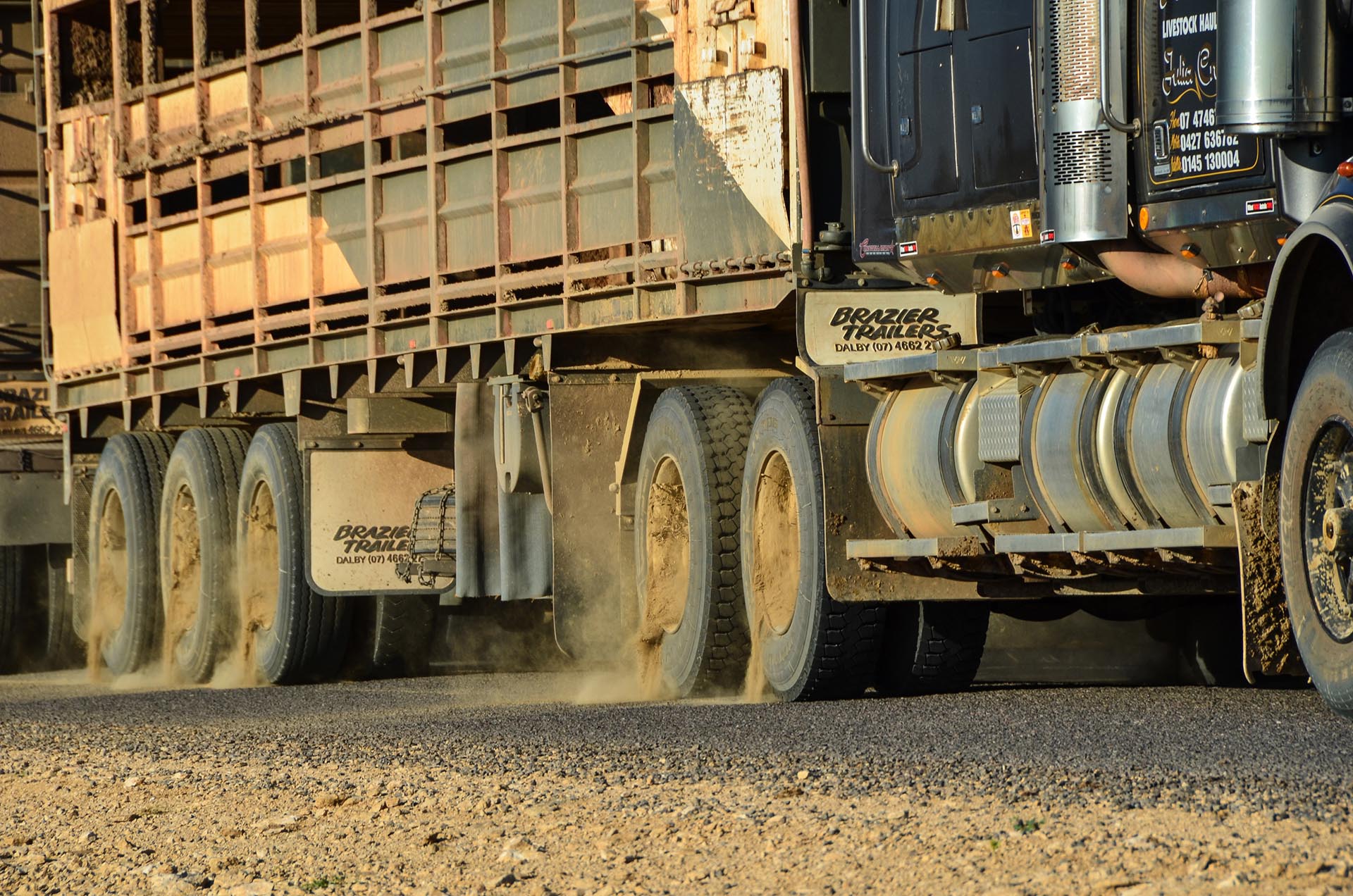
Western Star 6900
The hose on the lead trailer hangs over a cut down spider wheel spacer and the nozzle is clipped into a piece of pipe so that it doesn’t’ work loose on the rough roads.
Cackles makes use of spring loaded clips to secure all the latches. Now it was time to wash up and have a “Cook-up” as they say up in this neck of the woods.
Cackles’ Outback kitchen is a pretty good setup by anyone’s measure. He has a kettle, toaster, microwave, gas stove and even a BBQ plate. Inside his sleeper he has a freezer and fridge as well.
A few hours later, Cackles had made it back to his hometown of Julia Creek. He quietly rolled through the streets to his depot.
Tonight, he’d spend the night at home and in the morning promised to show us how he performs some of the maintenance that keeps this Western Star going day after day, but that’s another story.
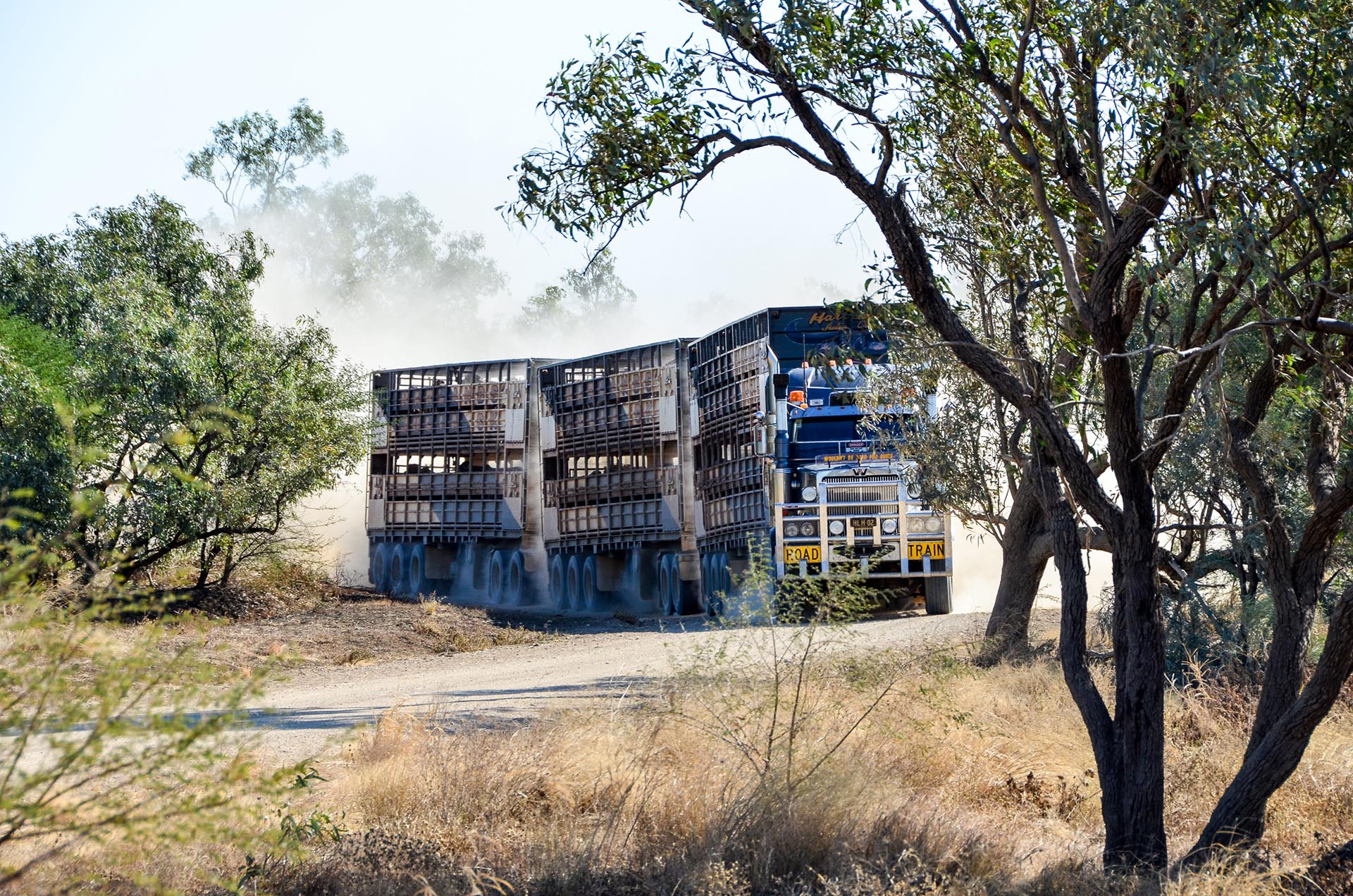
Western Star 6900
Specifications: Western Star 6900 6×4
Engine: Cummins Signature
Power: 620hp (462kW) @ 1600rpm
Torque: 2050lb/ft (2779Nm) @ 1100rpm
Gearbox: Eaton RTLO22918B 18-speed
Front Axle: Meritor FG-941 6.5T
Front Suspension: Taper leaf 7.5T
Rear Axles: Meritor RT-52-185G
Rear Axle Ratio: 4.89
Rear Suspension: Meritor AC-6T 6-Rod
Main Driveline: Meritor RPL25SD
Inter-axle Driveline: Meritor RPL20
Brakes: WABCO Antilock Braking System with traction control
Fuel: Alloy 6 x 473-litre
Extras: 72” Retruck ‘walk-through’ sleeper
Twin CR Turbo 2000 air dryer with heater
Jost JSK37 fifth wheel
Chassis checkerplate
Dolly pull to rear of chassis
Fresh water tank
Ice pack 2000

